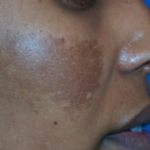Chlamydial pneumonia is a respiratory infection caused by the bacterium Chlamydia pneumoniae. This condition primarily affects the lungs and can result in mild to moderate respiratory illness. It is especially prevalent among older adults, individuals with weakened immune systems, and people in close-contact environments. This article delves into the key aspects of chlamydial pneumonia, including its causes, symptoms, diagnosis, treatment, and prevention strategies.

Understanding Chlamydial Pneumonia
What is Chlamydial Pneumonia?
Chlamydial pneumonia refers to a bacterial infection of the respiratory tract caused by Chlamydia pneumoniae. This pathogen is responsible for approximately 10% of community-acquired pneumonia (CAP) cases and is most commonly transmitted via respiratory droplets from coughing or sneezing.
The infection often manifests as atypical pneumonia, meaning its symptoms differ from those of typical bacterial pneumonia caused by Streptococcus pneumoniae. It progresses gradually and may mimic the common cold or influenza in its early stages.
Causes and Risk Factors
Primary Cause:
- Chlamydia pneumoniae: This gram-negative bacterium is an obligate intracellular pathogen, meaning it requires host cells to replicate and survive.
Risk Factors:
- Age: Most cases occur in individuals aged 60 and above, but young adults and adolescents are also vulnerable.
- Weakened Immune System: Conditions such as HIV/AIDS, chemotherapy, or organ transplantation increase susceptibility.
- Close-Contact Settings: Schools, military barracks, and nursing homes facilitate the spread of respiratory droplets.
- Smoking and Chronic Illness: Smoking and conditions like asthma or chronic obstructive pulmonary disease (COPD) amplify risks.
Symptoms
The symptoms of chlamydial pneumonia often overlap with other respiratory conditions, making diagnosis challenging.
Common Symptoms:
- Persistent dry cough
- Sore throat
- Mild fever or chills
- Fatigue and malaise
- Shortness of breath or wheezing
- Muscle aches
Severe Cases:
- Difficulty breathing
- Chest pain
- Cyanosis (bluish discoloration of the lips or skin due to oxygen deficiency)
Diagnosis
Accurate diagnosis is crucial for effective treatment. Medical professionals employ the following methods:
- Medical History and Physical Examination: Identifying symptoms and assessing the patient’s respiratory function.
- Chest X-Ray: Reveals patchy infiltrates or other abnormalities consistent with atypical pneumonia.
- Laboratory Tests:
- Serology: Detects specific antibodies against Chlamydia pneumoniae.
- Polymerase Chain Reaction (PCR): Confirms the presence of bacterial DNA.
- Culture Tests: Though less common, bacterial cultures may be used for definitive identification.
Treatment Options
Antibiotic Therapy
The cornerstone of chlamydial pneumonia treatment involves antibiotics effective against intracellular bacteria. Common choices include:
- Macrolides: Azithromycin or clarithromycin are often first-line treatments.
- Tetracyclines: Doxycycline is another effective option.
- Fluoroquinolones: Levofloxacin or moxifloxacin may be prescribed for severe cases.
Supportive Care
- Rest and hydration to facilitate recovery.
- Over-the-counter medications for symptom relief, such as fever reducers or cough suppressants.
Complications of Untreated Chlamydial Pneumonia
If left untreated, chlamydial pneumonia can lead to severe complications, including:
- Chronic respiratory issues such as bronchitis or asthma exacerbation.
- Secondary infections, including bacterial superinfections.
- Rarely, systemic complications like myocarditis or encephalitis.
Prevention Strategies
Reducing the risk of chlamydial pneumonia involves adopting preventive measures:
- Hygiene Practices: Frequent handwashing and avoiding close contact with infected individuals.
- Vaccination: While no vaccine exists for Chlamydia pneumoniae, pneumococcal and influenza vaccines reduce the risk of secondary infections.
- Healthy Lifestyle: Avoid smoking, maintain a balanced diet, and engage in regular exercise to boost immunity.
- Early Treatment of Respiratory Infections: Prompt medical attention for respiratory symptoms can prevent complications.

